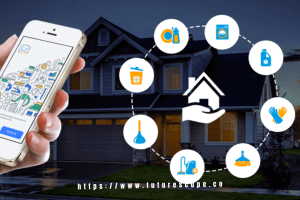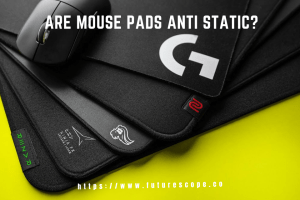What We Have Covered in This Article
Last Updated on October 2, 2021 by Editor Futurescope
The development of smartphone features has made it possible to access maps anywhere in the world using Google Maps. Android devices feature a Google maps application that you can use to get accurate directions. However, just like any other software, Google maps may stop working or malfunction.
Is your Android Google maps application not working correctly? Or is the app not working at all? You are likely running on an old version of the app, having incorrect user settings, or your mobile network has a poor signal. The Google Maps application may also have technical issues affecting its performance.
Regardless of the cause of the problem, you can apply various troubleshooting methods to get the Google Maps app to function correctly. Here, we shall show you how to fix Google Maps when it’s not working on Android.
Checking Your Internet Connection
The most common issue that makes the Android Google Maps app not function properly is a poor internet connection. The app requires the internet to get you real-time data, update, and download maps; internet issues may cause it not to function properly.
You can do the following to determine if your network is faulty:
- Launch Google Chrome or any other internet browser on your Android device
- Google search any site or keyword
- Check if the site loads correctly or if the browser also detects a lack of internet connection.
- If the site takes too long or does not load, you may have an internet connection issue.
You can solve this by rebooting your smartphone or router. Alternatively, switch to a mobile data plan if you are using a WiFi connection.
Updating Google Maps Application
Always check for updates of the Google Maps application on the Google Play Store. Older app versions may have performance issues that have been rectified on the newer versions. If your Maps app is outdated, consider updating it to solve the app performance issues.
You can manually update the app on Play Store or choose the auto-update option. The automatic update option updates all the apps immediately they are available on the Play Store. To update manually, follow these Android device-specific steps:
- Go to Google Play Store app
- On the Search bar, key in Google Maps
- The app page will open, and an option to update will be available
- Download the updated app version
After installing the update, check if the app will start functioning correctly. If not, try other troubleshooting methods in this article.
Clearing Android Google-Maps’ Data and Cache
Among the top most effective methods of fixing Google apps like YouTube, Google Maps, etc., is clearing the app’s cache and data. This data is stored on the app to boost the app performance. But, if it gets too large, the temporary data can cause a loading-related issue or poor app performance issue.
You can remove the data and app cache of the Google Maps application on Android using the following simple steps:
- Open your device Settings app
- Click on the Apps and Notification option
- Locate the Maps app and click it. If you cannot find it, click on App info, then on the top-screen menu, choose All Apps, then scroll down and locate Maps application. The settings interface may be different depending on your device manufacturer.
- After clicking on Maps, choose the Storage & Cache
- Click on Clear cache, then after this, click the Clear storage
- Close the Settings app and launch the Maps app.
Switching to Google Maps Go
Many people still use low-resource devices that may perform slowly if large apps are installed on them. Due to this reason, many app developers are now developing lightweight versions of their original apps. These light versions occupy less space, perform faster and use lesser resources than the original apps.
Google also developed a lighter version of the Google Maps app called Google Maps Go. You can download the Google Maps Go app on Google Play Store.
If you have an outdated or slow device, switching to the lightweight version of the Maps app should solve your app performance issue. The app works similarly to the original one and provides precise location but uses lesser resources and device disk space.
Enabling the Location Accuracy on your Phone
If the Maps app is not displaying your accurate location, you might have disabled the location accuracy option on your smartphone. The location accuracy enables your device to use GPS, WiFi, mobile networks, and sensors to find the best accurate location. When disabled, location is only found via GPS, which is less precise and slow.
To improve the location accuracy of Google Maps location services, enable the location accuracy using these steps:
- Go to your device user settings
- Scroll down the setting menu and click on the location option
- Once the Location setting screen appears, click Advanced, then proceed by tapping Google Location Accuracy. Newer Android versions will have the Location Accuracy option right after clicking location.
- On the upper-right corner of the screen, turn the toggle to the ON
After enabling the Google location accuracy, the Maps app should pinpoint the accurate location and flawless directions.
Turning off the WiFi Only Option
Google Maps requires data to function. To avoid incurring mobile data costs, the Maps app has an option to set the app to only download and update data via a WiFi connection. While using cellular data, the app won’t update or download any data.
To fix this, disable the WiFi-only option using these steps:
- Launch the Google Maps on your device
- Click on the profile icon situated at the top-right corner of the app
- Select Settings and turn the WiFi Only toggle to ON.
- Close the settings and turn mobile data on.
Your app will start using mobile data after changing these settings, thus enabling you to access accurate directions even without a Wi-Fi network.
Calibrating Google Maps
If you open Google Maps and the blue dot that shows your location is too broad, the app may be facing trouble pinpointing your location. You can solve this by calibrating the Maps app using these steps:
- Launch the Google Maps app
- Swipe up and click on the Calibrate option
- Tilt your phone in an 8-pattern direction a few times
- Click Done, then check the changes.
Conclusion
Google Maps is an excellent resource for mapping and directions. However, just like any app, it might develop performance issues. Use any of the troubleshooting methods in this article to troubleshoot Google Maps on your Android phone.









